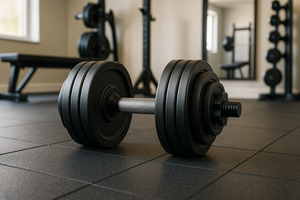Memory Foam vs Hybrid Mattresses Which Is Right for You

Choosing the right mattress can be a daunting task. With so many options available, it's easy to feel overwhelmed.
One common dilemma is choosing between a memory foam and a hybrid mattress. Both have their unique benefits and drawbacks, making the decision even more challenging.
Memory foam mattresses are known for their pressure-relieving properties. They contour to your body, providing a personalized sleep experience.
On the other hand, hybrid mattresses combine the best of both worlds. They offer the comfort of foam layers and the support of innerspring coils.
But which one is right for you? This depends on various factors, including your sleep preferences, body type, and budget.
In this guide, we'll delve into the specifics of memory foam and hybrid mattresses. We aim to help you make an informed decision and find the perfect mattress for your needs.
Explore our full range of mattresses, including memory foam, spring, and hybrid options, to find the perfect fit for your sleep needs.
Understanding Memory Foam Mattresses
Memory foam mattresses have gained popularity for their unique features. Developed initially by NASA, this material provides excellent comfort.
These mattresses are constructed from a special type of foam. The foam is designed to contour to the sleeper's body, offering customized support.
Memory foam reacts to heat and pressure. This property allows it to soften where needed, adapting to your body's shape.
One notable characteristic is motion isolation. Movement on one side of the bed is less likely to disturb a partner on the other side.
Memory foam mattresses come in various densities and firmness levels. This variety means that they can cater to different preferences and needs.
Here's a quick overview of what sets memory foam mattresses apart:
- Conformity: Adapts to the body's shape for personalized comfort.
- Pressure Relief: Reduces stress on pressure points like shoulders and hips.
- Motion Isolation: Limits movement transfer across the mattress.
- Allergen Resistance: Naturally resists dust mites and allergens.
- Customizable Firmness: Offers a range of firmness options to suit diverse preferences.
Discover the perfect fit for your bed with our full range of mattress sizes: Single, King Single, Double, Queen, and King size mattresses.
Benefits of Memory Foam Mattresses
One of the standout benefits is pressure relief. Memory foam excels at distributing body weight evenly.
This characteristic helps in reducing pain, especially in sensitive areas like the hips and shoulders. For side sleepers, this feature can significantly enhance comfort.
Another advantage is motion isolation. If you share your bed with a partner, movement is less likely to disturb your sleep.
Memory foam is also durable. Many models last between 8 to 10 years, providing good value for money.
In addition, memory foam can be beneficial for allergy sufferers. The dense structure of the foam resists dust mites and other allergens effectively.
Drawbacks of Memory Foam Mattresses
Despite the benefits, memory foam has some drawbacks. A common issue is heat retention, which can disturb sleep for hot sleepers.
The foam can trap body heat, making the mattress warmer than some may prefer. Some manufacturers add cooling technologies to mitigate this issue.
Another potential downside is the initial off-gassing smell. This is a chemical odor that can arise when the mattress is new.
Memory foam mattresses can also be heavier than other types. This can make them harder to move or rotate, which may be inconvenient.
Additionally, foam mattresses may not provide the bounce or responsiveness some users desire. Traditional innerspring mattresses might be better for those seeking a bouncier feel.
Understanding Hybrid Mattresses
Hybrid mattresses offer a blend of features. They combine layers of foam with innerspring coils, resulting in a unique sleep experience.
The innerspring core gives the mattress a firm base. This layer provides strong support, making it durable and resilient.
Hybrid models often include multiple foam layers. These may include memory foam or latex, adding extra comfort to the mattress.
This combination aims to give sleepers the best of both worlds. You get the contouring benefits of foam with the support of coils.
One of the appealing features of hybrid mattresses is improved airflow. The coils allow for better ventilation, which can keep you cooler at night.
Here are key components of a typical hybrid mattress:
- Innerspring Coils: Provide support and a traditional bounce.
- Comfort Layers: Usually made of memory foam or latex for pressure relief.
- Quilted Top: Adds an extra layer of plush comfort.
- Edge Support: Reinforced edges prevent sagging and offer a larger sleep surface.
- Zoned Support: Some models feature targeted support areas for pressure relief.
Benefits of Hybrid Mattresses
Hybrid mattresses excel in providing balanced support. The coil base offers sturdy support and helps maintain spinal alignment.
For those who prefer a cooler sleep surface, hybrids are ideal. Their design encourages airflow, helping to dissipate heat effectively.
These mattresses also provide better edge support. This feature is beneficial for those who sit or sleep near the bed’s edge.
The combination of materials results in a responsive surface. This makes it easier to move around on the bed, which can be vital for active sleepers.
Additionally, hybrid mattresses often have a plush, luxurious feel. With quilted tops and multiple layers, they appeal to those seeking a premium sleep experience.
Drawbacks of Hybrid Mattresses
Despite their advantages, hybrid mattresses have potential drawbacks. One concern can be their cost, as they tend to be pricier than other options.
The complexity of their design adds to the manufacturing cost. Additionally, the quality materials contribute to the higher price tag.
Hybrids can also be quite heavy. This makes moving and rotating the mattress more challenging than lighter models.
For some sleepers, the bounce from coils might be a drawback. Those who prefer a motion-absorbing surface might not find hybrids ideal.
Finally, the break-in period may be longer. It can take some time for these mattresses to reach their full comfort potential, which might test the patience of new users.
Comparing Memory Foam and Hybrid Mattresses
Choosing between a memory foam and hybrid mattress depends on your sleep needs. Both offer unique benefits tailored to different preferences.
Memory foam mattresses provide excellent pressure relief. They contour to your body, minimizing pressure points and aiding in pain relief.
In contrast, hybrid mattresses provide a balance of foam comfort and coil support. This combination supports various sleeping positions more effectively.
Both types have their unique strengths in temperature regulation. While hybrids typically stay cooler, some memory foam options feature cooling technologies.
Ultimately, the choice boils down to personal preference. Understanding each type's features can help you determine which aligns best with your needs.
Comfort and Support
Comfort and support are crucial in mattress selection. Memory foam excels in comfort by contouring to body shapes, relieving pressure points.
Hybrids, with their innerspring coils, offer firmer support. This can be beneficial for maintaining spinal alignment across various sleep positions.
Sleepers needing pressure relief may lean towards memory foam. Those seeking robust support often find hybrids more suitable.
In essence, comfort in memory foam is soft and cradling. Hybrid mattresses offer a blend of firmness and plushness for varied support.
Temperature Regulation
Temperature regulation can affect sleep quality. Memory foam retains more heat compared to hybrids, which might not suit hot sleepers.
Hybrid mattresses generally have better airflow due to innerspring coils. This design helps in dissipating heat for a cooler sleep.
Modern memory foam uses cooling gel-infusions or airflow channels to mitigate heat retention. These innovations improve temperature control.
Choosing a mattress depends on individual temperature preferences. Hot sleepers may prefer hybrids, while others might find enhanced cooling foams suitable.
Durability and Lifespan
Durability is a key factor in mattress selection. Memory foam mattresses typically last between 8-10 years with proper care.
Hybrid mattresses may offer a slightly longer lifespan. They last around 10-15 years, thanks to robust coil systems supporting the foam layers.
Material quality impacts durability in both types. Higher-density memory foam and quality coils enhance longevity and support.
Regular maintenance can extend mattress lifespan. Rotating and keeping the mattress clean helps in maintaining its structural integrity.
Motion Isolation and Edge Support
Motion isolation is crucial for undisturbed sleep. Memory foam excels in absorbing motion, beneficial for couples sharing a bed.
In contrast, hybrid mattresses provide enhanced edge support. This is ideal for those who use the entire sleeping surface.
While foam mutes motion transfer effectively, hybrids manage weight distribution and edge stability better. Both have strengths in different areas.
Selecting between the two depends on priorities. Those needing undisturbed sleep may prefer foam, while hybrids suit those needing edge support.
Price and Value
Price varies significantly between and within mattress types. Memory foam models are often more affordable but can vary by quality.
Hybrid mattresses generally come with a higher price tag. This reflects their complex construction of coils and foam layers.
Price should be weighed against potential lifespan and features. Considering total cost over time offers better investment insight.
Both types come in different price ranges, offering choices to match various budgets and needs for queen, king, double, or single mattresses.
Who Should Choose a Memory Foam Mattress?
Memory foam mattresses are ideal for those seeking pressure relief. If you experience joint or back pain, the contouring effect may provide comfort.
Side sleepers often find memory foam beneficial. It cradles shoulders and hips, promoting better alignment and reducing pressure.
Light sleepers might appreciate the motion isolation offered by memory foam. It minimizes disturbances from a partner’s movements.
Allergy sufferers could also benefit. Memory foam mattresses are resistant to dust mites and other allergens, promoting a healthier sleep environment.
Who Should Choose a Hybrid Mattress?
Hybrid mattresses are well-suited for individuals who prefer a balance of support and comfort. The combination of foam and coils appeals to many sleepers.
Stomach and back sleepers might favor the firmer support hybrids offer. This helps maintain spinal alignment and prevent sinking.
Couples with differing sleep preferences could benefit from a hybrid mattress. It offers a mix of firmness and contouring.
Those who tend to sleep hot may find hybrids advantageous. The innerspring coils allow for better airflow and cooling, enhancing comfort.
Making the Decision: Factors to Consider
Choosing between a memory foam or hybrid mattress involves considering several key factors. Each type offers unique benefits that cater to different needs.
It's important to consider personal preferences and specific sleeping requirements. Not every mattress suits everyone the same way.
Here are some crucial factors to think about before making your decision:
- Body Weight: Heavier individuals might prefer the support of a hybrid mattress.
- Temperature Sensitivity: Those who sleep hot might favor hybrid's breathability.
- Allergy Concerns: Memory foam is often better for those with allergies.
- Budget: Consider what you're comfortable spending for better sleep.
- Warranty and Trial Period: Check these policies for peace of mind.
Understanding your sleep preferences and lifestyle can guide your choice. Thoughtful consideration ensures you pick a mattress that enhances your sleep quality.
Sleep Preferences and Body Type
Your body type can influence the comfort level offered by different mattresses. Heavier people might need extra support to prevent sagging.
Lightweight sleepers might enjoy the soft contouring of memory foam. Hybrids, however, can provide balanced support for various body types.
It's essential to reflect on your comfort level when lying on different surfaces. A mattress should meet your physical needs and sleep habits.
Sleeping Positions
Your preferred sleeping position is crucial in determining the right mattress. Side sleepers benefit from the pressure relief of memory foam.
Back sleepers often prefer the firm support hybrids provide. This helps maintain proper spinal alignment while sleeping.
Stomach sleepers might seek firmer hybrids. These prevent excessive sinking and encourage better posture, ensuring a restful night.
Conclusion: Your Best Night's Sleep
Selecting the right mattress involves personal preference and specific needs. Whether you lean towards the contouring comfort of memory foam or the supportive bounce of a hybrid, the choice should reflect what best enhances your sleep quality.
Remember, investing in a good night's sleep pays off. A well-chosen mattress can improve not just your rest, but your overall well-being.












































